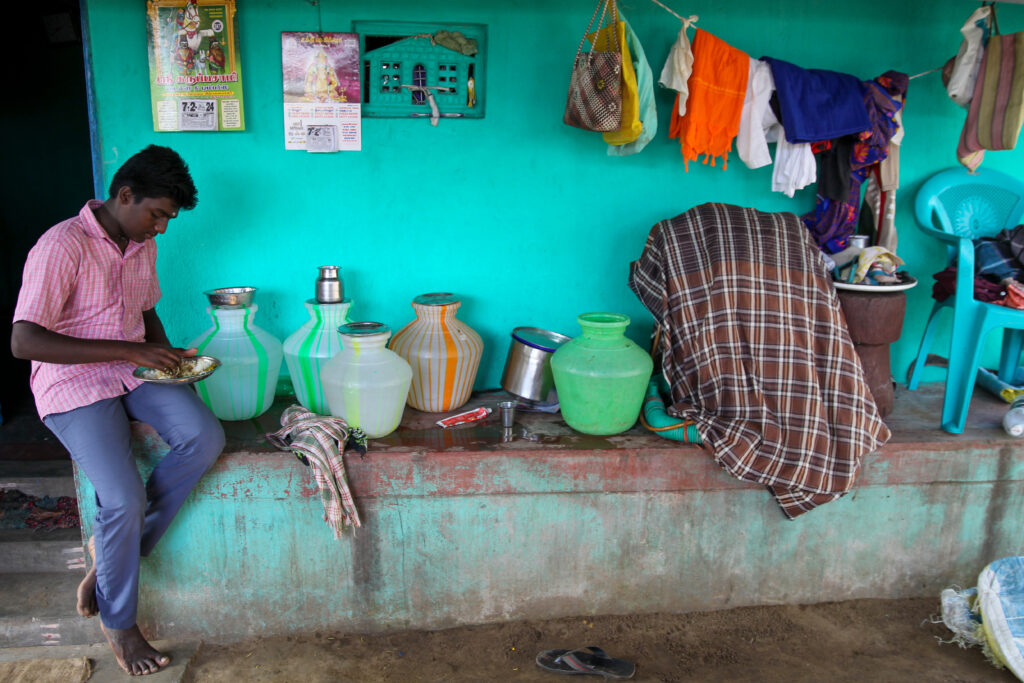According to the 2018 Composite Water Management Index report by the National Institution for Transforming India, India is facing the worst water crisis in its history. Approximately 600 million people experience high to extreme water stress. Inadequate access to safe water is estimated to cause 200,000 deaths annually.
Yale University’s 2022 unsafe drinking water index ranked India 141 out of 180 countries. Nearly 70 per cent of India’s water is contaminated. By 2030, India’s water demand is projected to be double the amount available as reiterated by the Interconnected Disaster Risks Report in October 2023. The potential scarcity would affect millions and adversely impact the country’s GDP.
Groundwater is vital for India’s agriculture, industry and population needs. Groundwater is a primary irrigation source, crucial for food security. In rural areas, groundwater is a primary source of drinking water through community wells and boreholes. Industries depend on it, particularly where surface water is scarce. Despite its significance, groundwater over-extraction poses challenges, emphasising the importance of sustainable management to ensure its long-term availability.
India has 18 per cent of the world’s population but only 4 per cent of its water resources, making it among the most water-stressed countries. The average per capita water availability for 2031 has been assessed to be 1367 cubic metres. Per capita annual freshwater availability in 2021 was lower than the Falkenmark Water Stress Indicator threshold.
Around 30 per cent of India’s freshwater is stored as groundwater, mostly in aquifers — bodies of permeable rock and sediment — below the Earth’s surface. With more than 60 per cent of irrigated agriculture and 85 per cent of drinking water supplies dependent on it, groundwater is a vital resource.
Withdrawing water from aquifers causes a reduction in the water table. Conversely, the water table can be elevated by rainwater, snowmelt, rivers and other surface water inputs.
In India, the government offers agricultural power subsidies equivalent to 85 per cent of the average supply cost to promote agricultural production and foster economic growth, particularly among impoverished rural communities. Some states, like Andhra Pradesh, provide free electricity.
Output subsidies in India, guaranteeing crop purchase above market rates, have significantly contributed to the depletion of water tables. These policies have resulted in a 30 per cent overproduction of water-intensive crops, with the state of Punjab experiencing a 63 per cent decline in groundwater tables due to rice procurement. In Madhya Pradesh, wheat procurement between 2007–2016 led to a 5.3 per cent increase in dry wells and a 3.4 per cent increase in deep tubewells.
In India, 70–80 per cent of irrigation-dependent farmers rely on groundwater. There is a correlation between intensive irrigation — often powered by free or highly subsidised electricity — and increased income for farmers.
The government’s 2017 Central Ground Water Board report identified 1499 units in six states as ‘overexploited’ or ‘critical’. The findings highlight the danger of dependence on groundwater and environmental challenges caused by agricultural practices.
To tackle declining groundwater levels, the government must reassess power and water subsidies and implement a targeted program addressing the groundwater recharge problem, especially in the northern regions of India where aquifers are drying up.
There are three main approaches to address groundwater depletion. The first is community-based management of groundwater. The second aims to replenish groundwater levels by reassessing crop patterns and spatial management. The third approach centres the adoption of water-efficient technologies, such as water-efficient pump sets and technological innovations, like drip and sprinkler irrigation systems.
State electricity boards across India face financial losses. The relationship between electricity and irrigation contributes to this challenge. Output subsidies exert pressure, which leads to heightened electricity demand in agriculture. Farmers are incentivised to extract groundwater for the more lucrative, and equally more water-intensive, crops. Additionally, cross-subsidisation has substantially increased industrial power tariffs over the last decade.
It is crucial to promote a shift in crop patterns towards less water-intensive options, like millets. In the early 20th century, Indian households consumed smaller quantities of rice and wheat, with millets being popular choices. Yet over time, easier production and increased availability have steered households towards consuming more rice and wheat.
Managed aquifer recharge techniques are widely employed to replenish reservoir spaces with surplus fresh water. Common methods include recharging shafts, checking dams and utilising previously unused dug wells. India must take the lead in adopting these techniques.
The country is prone to annual flooding in certain regions. The Indian Rivers Inter-link, a proposed large-scale civil engineering endeavour, aims to connect Indian rivers through reservoirs and canals. By connecting Indian rivers, the project should enhance irrigation, promote groundwater recharge, mitigate persistent floods and address water shortages.
The Ken-Betwa River Linking project has received parliamentary approval, though it will necessitate significant time and funding before results become apparent. Quicker approval for smaller river link projects in northern India is feasible.
Communities must take active steps to recharge water, change crop patterns and adopt a comprehensive and holistic approach to preserving soil and water. There is an immediate need for an educational program which addresses the perils of groundwater depletion and discusses local solutions for increasing the water tables.
Addressing sustainability concerns and preventing groundwater depletion in India demands urgent policy attention. Failure to act may result in millions experiencing water stress by 2025.
Monika Chaudhary is Associate Professor of Strategy and Finance at IIHMR University, Jaipur and Associate Faculty at Bloomberg School of Public Health, Johns Hopkins University.


India is facing a severe water crisis, leading to almost 200,000 deaths annually. It is crucial for the government to reassess power and water subsidies, implement targeted programs addressing groundwater depletion, shift crop patterns towards less water-intensive options and adopt efficient technologies to tackle the crisis. The government must act now to prevent millions from experiencing water stress by 2025.